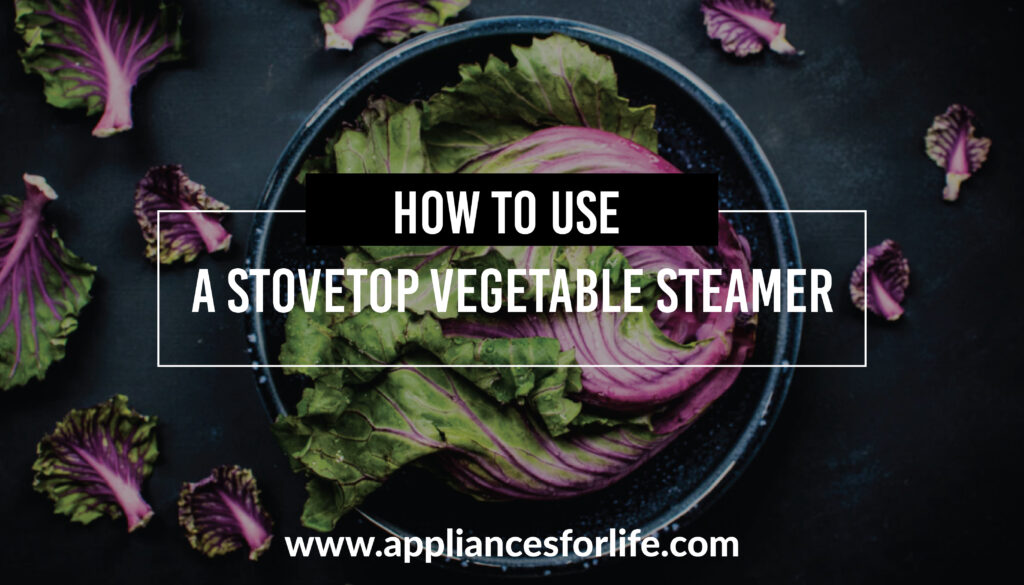- Healthy living and dieting is no longer a strange concept. Dieting particularly has been preached since the beginning of time with Veggies at the crux of. Some edible green leafs have been discovered to be highly rich in Vitamins and potent detoxicants. Cooking Veggies is necessary to make some Veggies edible, nonetheless, their potency can be significantly impaired by this process. Hence, several years of research has revealed that steaming is a viable alternative to boiling veggies.
- Steaming as a viable alternative to boiling Veggies and other foods like meat is most effective with the use of Steamers. Whether it is an electric steamer or a Stovetop vegetable steamer, all you need is a few guidelines on how to use an electric steamer for cooking and some vegetable steamer instructions and you are good to go. In this article you will find a series of instructions on how to use your food steamers.
Steaming
A lot of dietary advice has floated around in recent times. While some can be substantiated in Scientific theories, others are just notions and traditions that have become popular over time. However, a common discovery across several classes of people is that Vegetables are a means of a healthy diet. This is no surprise because, from Spinach to Tomatoes, vegetables are fully packed with important Vitamins, Minerals, and antioxidants, all of which are necessary for lasting health.
Table of Contents
ToggleVegetables are an exciting and necessary addition to a healthy diet package, but as exciting as they appear, no one fancies gnawing on raw broccoli. Consuming uncooked vegetables is potent enough to discourage anyone from eating vegetables at all, and this is why steaming is a great alternative. Research shows that cooking, especially at high degrees, significantly impairs the nutritional value of most vegetables. On the hand, Steaming your vegetables helps retain their nutritional values and produces favorable results for flavor and texture, which could help you eat more of them.
According to Michelle Dudash, a registered dietitian, and chef, “Steaming softens vegetables, making chewing easier and can make some vegetables easier to digest-Like broccoli and Cabbage.” She added that “Steaming vegetables adds moisture, making the vegetables juicier.”
In a nutshell, Steaming is an Asian ancient healthy way to cook food without losing its nutrient quality and taste. It is also the best way to prepare your veggies. If you are not down for cooking after a long day at work, steaming is the best way to get your food done with almost no effort. However, despite the nutritional advantages of steamed vegetables, many chefs still find it difficult to use a food steamer in the everyday hustle and bustle of cooking and preparing vegetables.
While it may seem simple and self-explanatory, using steamers has some intricacies that need mastering. A mistake can do so much as ruin a whole dish, but not to worry, this article will provide a few guidelines for using both stovetop steamers and electric Steamers, and you’ll notice that your veggies taste better as soon as you start implementing the guidelines.
What is a Steamer?
A steamer is used for cooking meat, vegetables, etc., with the steam produced from boiling water. A water heating system is usually installed in an electric steamer that generates steam that gradually cooks the food. Depending on its structure and use, a steamer can be a simple or an elaborate appliance. It is simple when it is just a basket placed on boiling water, but at the same time, it can be as elaborate as an appliance with a boiler, thermostat, heating compartment, and lid for applying pressure, all built into one. In a nutshell, the main purpose of a steamer is to cook food with the assistance of steam by applying pressure with a lid.
It is instructive to note that even though cookers too use steam for cooking. They differ from an actual steamer in that the former requires a closed environment to maximize pressure levels to cook at a higher temperature, whereas a steamer only uses steam at normal temperatures created by boiling water. Moreover, instead of cooking, steaming is preferable for the above reasons. In addition to this, steaming cooks food more gently than almost any other method. It is preferable to boiling because while boiling, the food is emersed in boiling water, making the food likely to jostle, overcook, or absorb too much water.
Stovetop Steamers vs. Electric Steamers
Electric Steamers: An Electric steamer is a standalone cooking appliance that does the cooking for you without much trouble. An electric steamer has a bottom and top compartments. The bottom compartment holds the boiling water that supplies steam for cooking, while the top compartment holds the food being cooked. They also come with stackable, perforated trays or are otherwise divided so you can steam different types of food or large batches at once. All you need to do to cook in an electric steamer is to add the water and the food you wish to cook, close and lock the lid. Electric Steamers provide higher quality results because the boiling water heats the pot. Additionally, they are also much safer than stove top steamers. If you want to throw a pot of boiling water on the stove and walk away, there is a chance it may burn out.
A Stovetop Steamer: On the other hand, Stovetop steamers are generally smaller and designed to be inserted into or on a saucepan or pot containing a couple of inches of simmering water. Steam from the simmering water enters the top pan through the perforated base and heats the food sitting on top. Stovetop Steamers have a more limited capacity compared to their electric counterpart. If you are on a tight budget, a stove-top steamer can be an affordable way to steam food. These pots look similar to regular pots and are usually stainless steel with a terra cotta or glass lid.
Other Types Include;
Steamer basket: A Steamer basket is one of the easiest and simplest ways to steam vegetables. They are also called stovetop steamers becausee they are used on a stove. Steamer Baskets are directly inserted into a pot or a pan and then used on a stove. It is an easy means of steaming veggies because all you need to do is add some water to the pot beneath and veggies to be steamed to the basket on top. Make sure the lid to the basket is properly shut and you will have your veggies ready in no time.
Combination oven/steamers: Combination steamers, also known as hot-air steamers, can produce both dry and moist heat. They can shift between these two modes automatically during the cooking process. For example, it can steam vegetables and roast meat at the same time. These types of steamers generate steam to cook the food.
Pressure steamer: A pressure Steamer is one of the most efficient steamers out there. It combines steam and pressure that allows for optimised heat transfer. This way, the cooking time is significantly reduced by almost half, as compared to traditional cooking methods. Pressure steamers are useful for low temperature cooking, fast steam readiness and high nutrition retention of the food item.
How to Use a Stovetop Steamer
Steamers in general almost have the same usage guidelines. The peculiar differences in their usage come from the kind of food being steamed and the kind of steamer being used. Though an Electric steamer requires less hassles in its operation, all that is to be done most times is adding water and leaving it to boil for a moment However there are some crucial factors to be noted including the amount of water to be added and when to add it. This section will deal extensively with some guidelines necessary for the use of food Steamers generally as they apply also specifically to Stovetop Steamers. The guidelines include the following;
Don’t Add too Much Water
The whole essence of a Steam cooking is steam produced from boiling water, hence, this suggests that water is the most important part of a steamer, hence it is crucial to understand how much water to add in a steamer without boiling water particularly, a steamer cannot function, and this is why it is important to add just the right amount of it at the right time for our Stovetop Steamer to function as it should.
When using a stovetop steamer, you want to start by adding water not above 2 inches of the pot or more, just ensure that the water does not get into the steamer’s basket as this could ruin your meal. In thesame vein, make sure to add enough water to the pot so that water in the pot does not dry up while cooking is still ongoing. If water is exhausted while cooking is still on, the pot will certainly burn therefore make sure to determine the amount of water needed for the pot based on the quantity of the food being cooked. Note that this is also applicable when you faced with the question of how to use a stainless steel vegetable steamer
Boil the water in the pot
It is advisable to let the water boil in the Steamer’s pot before your veggies or other foods are added. Although it is tempting to just want to thrown in the Veggies as soon as water has been added to the pot beneath but this may cause uneven cooking at the long run, hence you should let the water in the pot boil to the point that it steams a bit before you add the food to be cooked to the basket above the pot.
Make sure not to Oversteam
One of the toughest tests of a chef is thier timing. Perfect timing will help you get every food item ready on the table while they are still hot and tasty but if a chef’s cooking timing is not gotten right, some food items may arrive earlier than they should thus losing its taste.
Vegetables are quite delicate when they cook. Unlike other delicacie, they cannot be allowed to steam for too long otherwise they will get soggy and messy hence, perfect timing for cooking veggies would be after all other foods are done so that the veggies come in last but still hot and tasty. However, if you choose to steam the veggies first, avoid the mistake of leaving the veggies on despite turning heat source off because, even while the heat source is off, the veggies continue to cook. Hence, make sure to get them out of the steaming basket as soon as they are done to prevent it from getting soggy. Vegetables extracted from a steam basket can be kept in ice water to give it some crisp.
Make sure the Steaemer is a Air-tight
In order for your food to cook properly in a steamer, the steam produced in the steamer needs to actually touch the food items the basket. If you have a loose-fitting lid, some steam will surely escape from the steamer thereby causing your food to be either halfly done or not done at all, in the set time.
The situation of a loose-fitting lid is common with Stovetop Steamers. This is so because most stovetop steamers use baskets placed on top of boiling water. When a loose lid is noticed, try adding a tea towel between the top of the steamer and the lid. However, if your electric steamer has a loose lid, then you should not use it at all.
Measure Everything Accurately and Add Season the Food before Steaming
Steaming time is also a function of the quantity of food to be cooked. It is important to take note of the quantity of food to be cooked in order to be able to determine the amount of time needed for steaming. Try to make what you are putting into the steamer be of the same size as the smaller one cooks faster than the bigger ones; it is one of the steaming tips you won’t get everywhere.
On the other hand, it is advisable to season your food first before commencing steaming because this will help the seasoning penetrate the foods deeply and prevent any medium of steam escape while cooking is on. For example, seasoning meat before steaming allows the recipe to marinate to bring out the flavor.
FAQs
Why use an Electric Food Steamer?
Electric steamer simply makes your work easy. Electric food steamers can be brought from the market with affordable price and easily operate. These are smaller in size so it consumes less space than other appliances.
Are Electric Steamers more expensive than stove top steamers?
Stovetop steamers are more expensive than Electric Steamers but the latter is still more effective.
What can you cook in a steamer?
Stovetop steamers can effectively cook vegetables an meat. However, other kinds of foods requiring longer time for cooking (Stews, Soups and Casseroles) can be best cooked with an Electric Steamer. Electric steamers are also very useful for cooking various Chinnese dishes like rice, noodles and rolls
What are the benefits of steaming vegetables?
Steaming helps conserves the color, flavor and most importantly nutrients/ Vitamins in veggies. The main reason for steaming vegetables should be preserving Vitamins such as Zinc, potassium and Phosphorous which are inherently present in Vegetables
18 MINUTES
ESTIMATED TIME DESIGNING AND UPLOADING THIS ARTICLE
08 HOURS
ESTIMATED TIME RESEARCHING AND WRITING THIS ARTICLE
You Might Also Like

How to Remove Stickers from Appliances
Sometimes, appliances are better off with decorative stickers but not everybody understands that, especially people with young kids at home. In this article, we’ll be looking at how to easily remove these stickers from your stainless steel appliances. The new appliances coming through the ranks

Bosch Induction Cooktop Problems and Solutions
Induction cooktops are great, but even they also have their own problems one has to deal with occasionally, depending on the depth. We’ll be taking you through the different problems you are likely to encounter when you’re using a Bosch induction cooktop. Bosch is regarded

40 Inch Electric Range To Fit Your Cooking Needs
Getting Warmed Up A 40-inch electric range is a great thing to have when you need to cook dinners for your family or special events. For those who love to cook and love something that helps with the efficiency and quality of your food, these

The Best Force 10 Electric Stove Reviews For That Rugged Marine Environment
We invite you, dear reader, to take a dive with us today and delve into Force 10 electric stove reviews. The menu of Force 10 appliances is varied, offering electric cooking appliances, from Ceramic Glass Cooktops to full-size Galley Ranges. Other features that stand out

Make the Best Use of Cooking on Your Induction Cooktop
Learning and understanding how an induction cooktop works is complicated if you really don’t know what you are talking about. Many people tend to shy away from the idea of induction cooktops because they feel like the cooking methods are different and so are the

How to use camerons stovetop smoker?
Smoking has been an age-long cooking style not only because of its desired unique flavour but also because of its potency in preservation. Long before technological innovations like the Refrigerator, smoking has always been a useful method for preservation. This article discusses some forms of

Bosch is literally a leading company when it comes to innovative technology and reliable appliances. It is a German multinational engineering company and it is currently classed as the world’s largest supplier of household appliances, power tools, garden tools and heating and hot water necessities.

What Are The Best Appliances To Buy For Your Home?
It’s not always easy finding out what the best appliances to buy in the market are, especially when you’re on a budget but in this article, we’ll be helping you solve that mystery by recommending some of the best budget-friendly kitchen appliances you can get

Brown Stove Works Inc., a leading appliance manufacturer in the United States, is the maker of brown electric stoves. The best electric stoves for your kitchen will rank highly based on price, performance, and features. The oven is equipped with three racks and heats evenly

State of the Art Electric Stoves For Sale
Electric stoves today offer the consumer the chance to cook on a sleek and stylish stove at an affordable price while still being kind to the environment. They are safe and simply the best type of stove to use. If you are upgrading your kitchen


